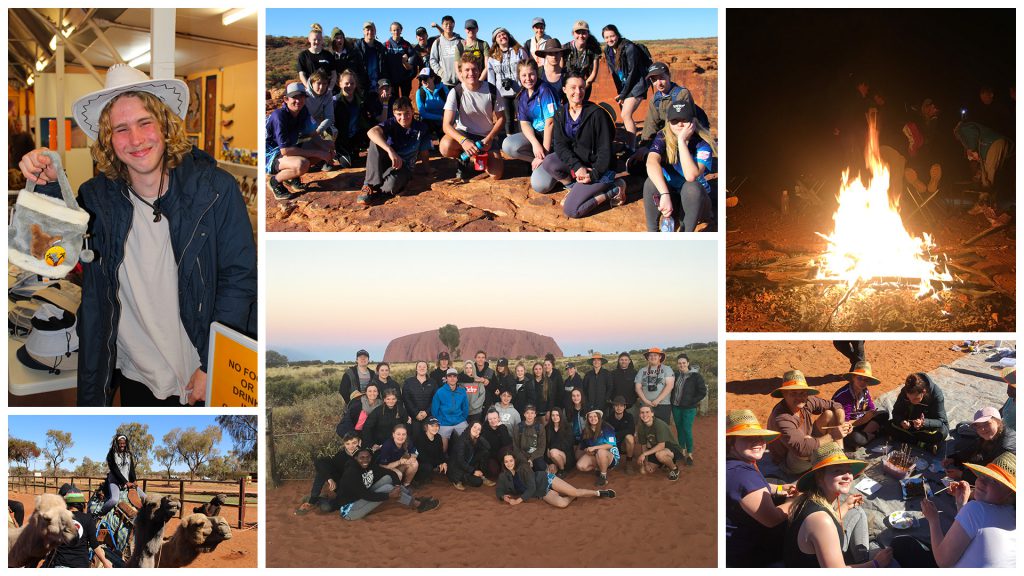The 2018 central Australia trip took on a new look compared to how it has been run in the past, with this year’s group getting to fly up to Darwin get aboard the coach and drive from the top to the bottom of Australia all the way down to Adelaide and back home to Wodonga covering areas a lot of both staff and students hadn’t seen before, bringing with that new adventures, experiences and plenty of good times.
The trip began as early as possible, at 2am on the 5th of July when the 28 students and 5 staff met at the school to board the bus down to Melbourne, with most passengers being asleep after about 15 minutes of driving, they awoke at Melbourne airport for their flight up to Darwin, an exciting time for some as it was their first time on a plane.
After landing in Darwin the heat change was the first thing most noticed, going from around 0° at take-off and hitting around 35° after we had landed. Once at the airport we met both our fantastic cook Robbie and our very funny bus driver Steve, after a quick introduction we headed off to camp to set up our tents for the next few nights. After they were set up and we had a bite for lunch it was off to the Darwin wave pool to beat the heat before driving to the Mindil markets to buy some dinner that was enjoyed while watching a golden sunset on the beach.
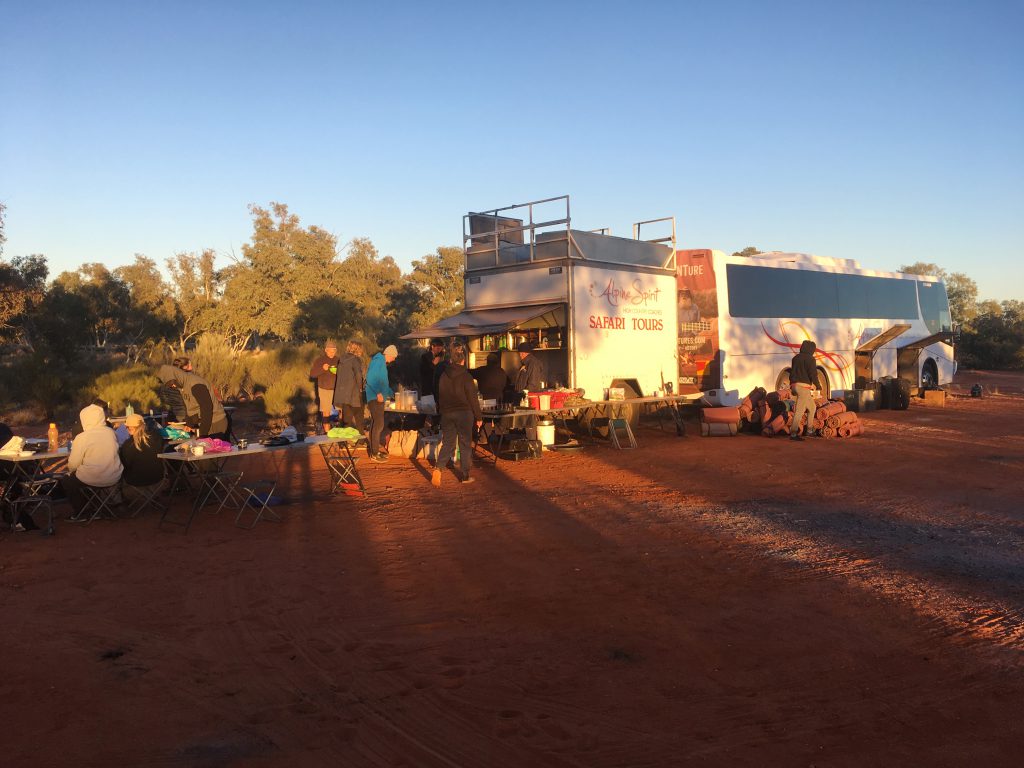
The next day we headed off for our first full day of adventures going out into Litchfield National Park. Stopping at termite mounds 10 meters high on the way to two incredible waterfalls, Florence and Wangi falls, where we had the chance to swim at both and even go for a walk through the tropical rain forest like environments around them. That night we had a delicious meal prepared by Robbie before heading to the deck chair cinema to watch a movie under the stars. (While trying to avoid popcorn stealing possums)
On day number 3 we started out at the Museum and Art Gallery of the Northern Territory, a very thought-provoking place filled with incredible artworks by nationally recognised Aboriginal artists as well as saddening yet interesting exhibits about Cyclone Tracey. After leaving the MAGNT we headed to Crocodylus Park, which is a home to many massive crocs, a few of the students even got a chance to feed some of the bigger ones and awe in the sheer power of some of the earth’s biggest reptiles. This great day was finished off with a beautiful sunset at Ubirr, a sacred place to the aboriginal people of the area, filled with history and some incredible cave paintings.
The following morning we are up before the sun and travel down to Cooinda to hop aboard a tourist boat which we use to ride down the Yellow Waters Lagoon, seeing amazingly colourful and rare birds and intimidatingly large wild crocodiles in their natural habitat once we had finished scouring up and down this incredible waterway, we set off for the Anbangbang Gallery in Nourlangie Rock from here we also get a chance to visit the Warradjan Aboriginal Centre giving us a fascinating insight to the culture significance of the area. Finally we head off to Katherine the NT’s 4th largest town to rest for the night.
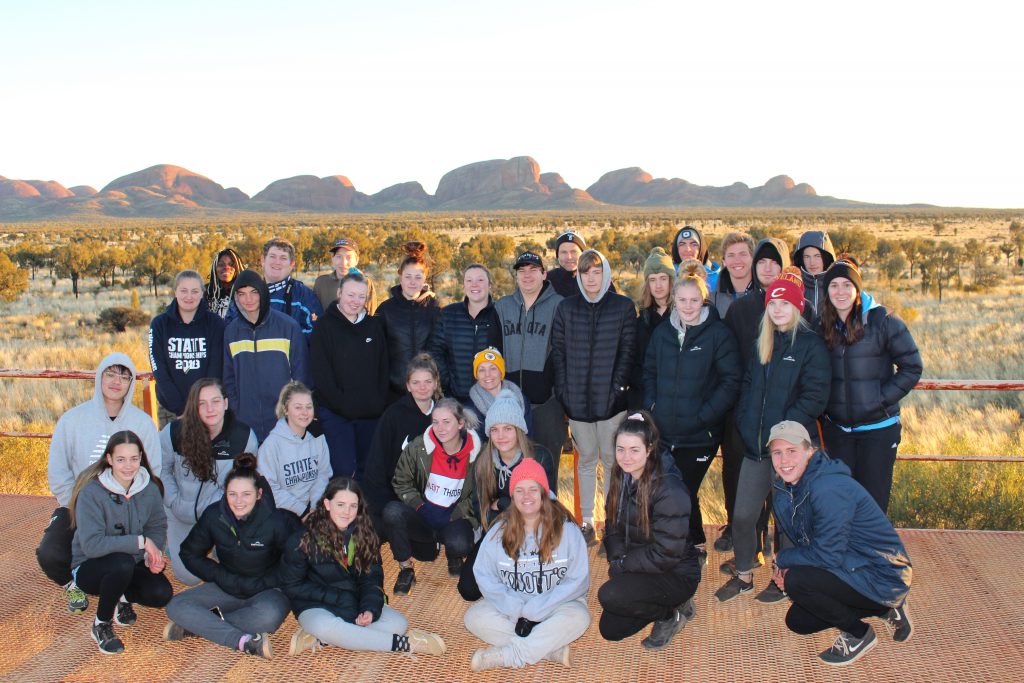
Another early rise and river cruise on the fifth day as we head down the Katherine Gorge (Nitmiluk) spotting some crocs, hearing incredible stories about the area both culturally and about how high the water rises in the wet season as well as staring at the massive, impressive and well preserved cave paintings on the walls of the canyon. We then load back up on the bus and head through to the beautiful Mataranka Hot Springs where we all get a chance to unwind and float around in the naturally heated water while surrounded by hundreds of palm trees. Later that night we pull into the Daly Waters pub for our accommodation and dinner. A night filled with live music, table tennis, great meals and a bit of a dance was what we got and was thoroughly enjoyed by all.
Up at a slower pace this morning we get a bit more of a sleep in than the last few days, as we jump on the bus for a long drive to Alice Springs, stopping on the way at the Devils marbles, an important and incredible place with massive spheres of rock that seemingly have no earthly place there. The aborigines of the area believing that they are the eggs of the rainbow serpent Wanambi, making it a very important cultural place. From the devils marbles we push on down towards Alice Springs.
Exactly a week after we started the trip we kicked off the day with a trip just out of town where we meet a guide who introduces us to a big group of aboriginal people who are still living their traditional cultures and way of life. The guide tells us many interesting cultural stories and shows us traditional foods, weapons and art that the aboriginal people of the area previously and still use, create and enjoy. The morning is a great time and involves most students trying some kangaroo tail, witchetty grub and other bush tucker along with doing some target practice with a boomerang. We spent the afternoon at the royal flying doctors service and the school of the air, learning about incredible the services that both provide to the rural Australians in safety, healthcare and education. We also checked out the Reptile Park which is home to some of the biggest, rarest and most venomous snakes and reptiles in the country. During the evening we all unwind back at the caravan park by the pool or with an exciting game of spike ball.
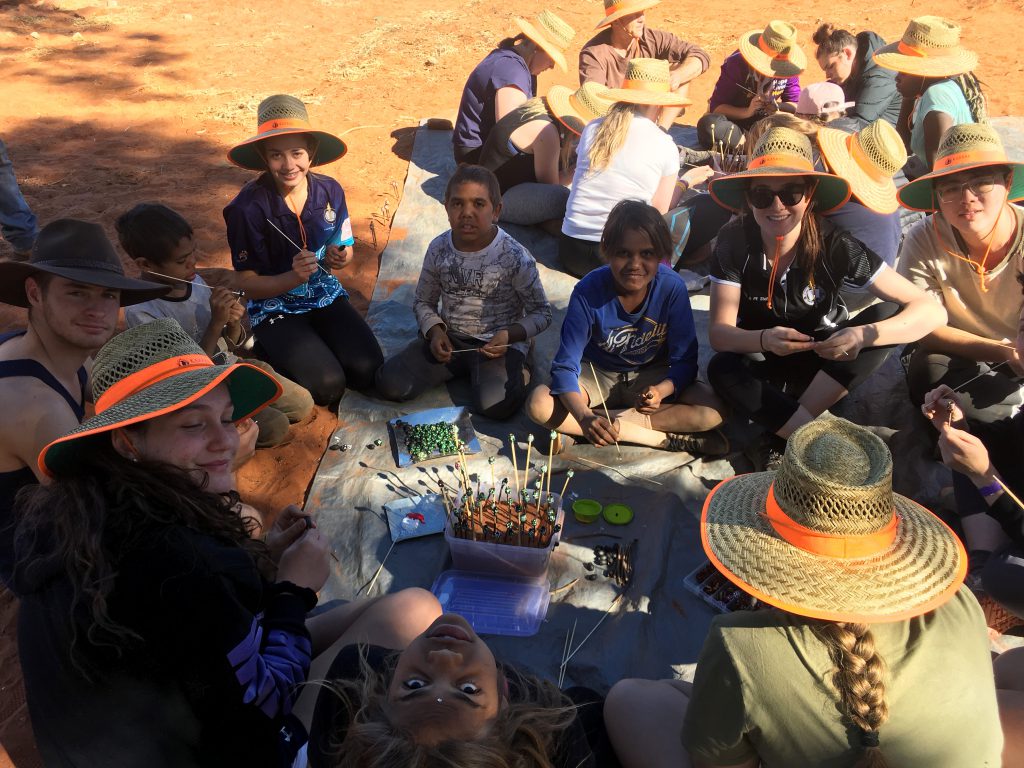
The next day we depart Alice Springs, but not before stopping through the Desert Park where we got to see all the native animals of the area, from dingoes to bilbies and from monitor lizards to eagles, the park had it all. Including a bird show which showcased some amazingly well trained birds pulling off incredible tricks. Next it was off to Kings Creek Station where we would be staying the next 3 nights. But not before stopping off at a property off the Lassiter highway for a quick chance to ride and quickly race on a camel.
Getting up on day 9 we headed off just a couple kms down the road to meet with Peter the leader of a remote aboriginal community called Wanmarra he takes us through a tour of their cultural centre where everyone gets a chance to learn a bit more about the cultural beliefs as well as the bush tucker and arts of the area and then takes us over to the community, where he and his close family live, we will spend the rest of the afternoon here happily doing as much as we can to help out with Peters dream of turning the community into a place where native foods and bush tucker will be grown. After a couple hours helping out with gardening and having some fun playing sports with the kids we head back to Kings Creek Station Caravan Park for the evening, at this point groups of students got the incredible option to take a helicopter ride over kings canyon and the surrounding areas, which departed from right out the front of the caravan park, with insane views and the thrill of flying it surely would have been the highlight of the trip for some. After everything calmed down for the night everyone had another delicious dinner cooked by Robbie then sat around the campfire laughing and telling stories.
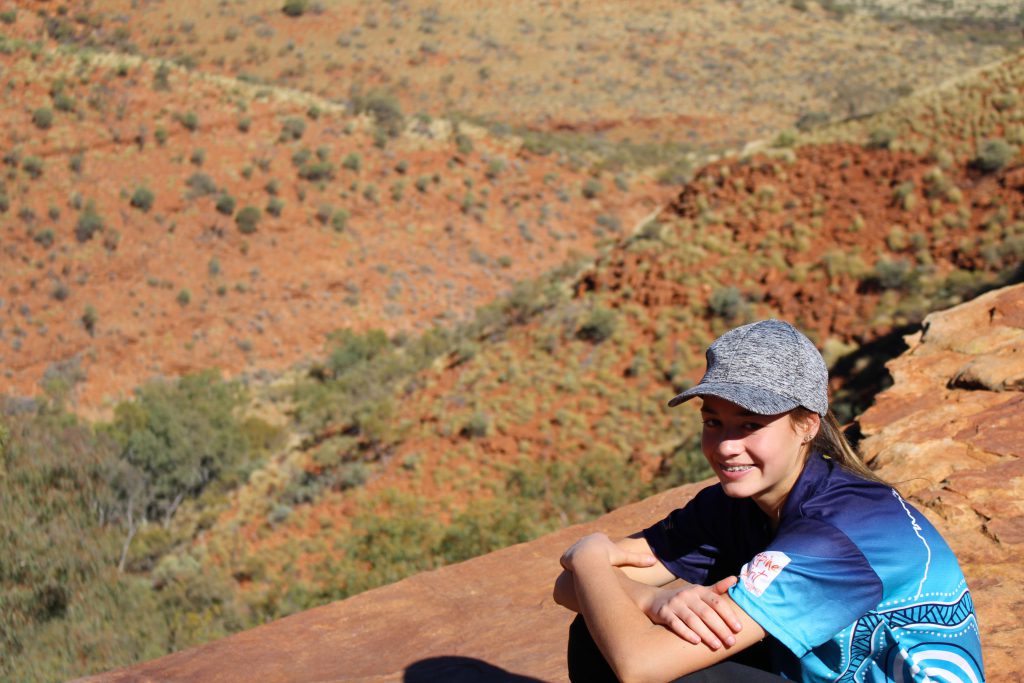
Day 10 started off great with everyone heading into one of the most scenic walks the Northern Territory has to offer, the loop around Kings Canyon, with bright red sandstone walls and a valley filled with lush plant life the area has to be seen to be believed. That afternoon after some lunch and a little bit of time to relax we headed back to the Wanmarra community to finish off our work. After an awesome effort by absolutely everyone involved we got a chance to stand back look at our newly planted gardens of vegetables and the massive mountain of weeds and pest grasses that we had cleared away and be proud of the fact that we had done something off the usual tourist path and had helped out some great people trying to accomplish an incredible thing in a remote area.
The next day we head to the heart of the country to drink in the rich culture and marvel in the sheer size of Uluru, after arriving and having checked into the caravan park for the night we took off to the base of the rock, opting to out of respect walk around the outside instead of climbing it, the walk took a couple hours but at no point was it any less amazing, the stories that are all around it on signs relate to individual markings or formations on Uluru and create a surreal feeling of importance which everyone experienced. Once we had finished the loop, we drove a couple kms up the road to a viewing area and watched the sun set in a shade of purple on the rock while having some late afternoon snacks.
Day 12 started off with an early drive to another viewing area, this time closer to Kata Tjuta (the Olgas) to watch the sun rise, from here we could also see the iconic silhouette of Uluru on the horizon as the sun came up. Seeing as we were close it only made for a short drive to the base of Kata Tjuta where we get to go on our last walk of the trip, this one takes us through “the valley of the winds” which like Uluru has an aura as you walk through it, at a point going through we reach a lookout and got a chance to sit in silence and reflect while staring out at the seemingly unreal valley below us. After leaving we drive back towards Uluru to visit the accompanying cultural centre, another great chance to learn as much as possible about our nation and its people’s history, as well as browse through some souvenirs. That night after some free time to explore around the Ayers Rock Township we sit back relax at our camp for the evening.
After taking in one of the most iconic natural landmarks on the planet at Uluru over the last couple of days we sadly start our long trip home. Departing we head down the highway to a place call Mt Ebenezer a small roadhouse that also features a gallery filled with local indigenous art made by the areas community after this chance to stretch our legs a bit we jump back on the bus and drive to our bush camp. After we arrive and set up our tents we all get a chance to sit back, relax and enjoy our meals before hanging out around a fire under the stars and truly enjoying an outback experience, away from all the luxuries of home such as phone reception and running water.
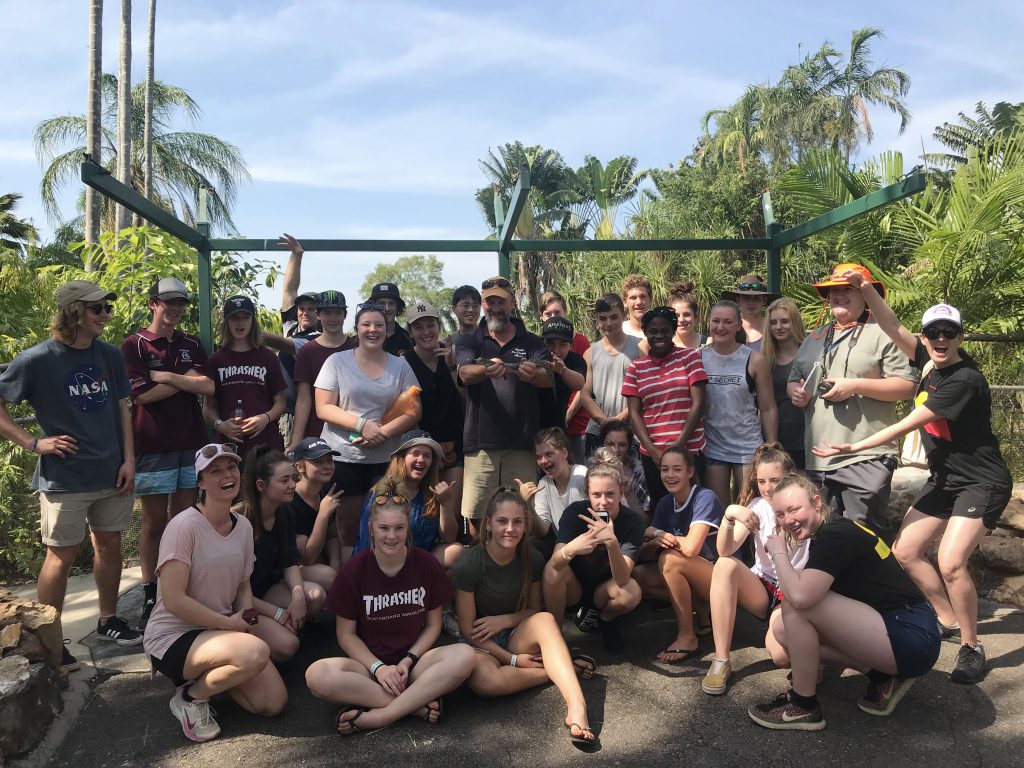
Waking up on Wednesday morning for day 14, we pack down the tents and load up the bus like a well-oiled machine, having had a good amount of practice over the last 2 weeks. Today we head to Coober Pedy, our last destination before the big final leg of travel to get home. On arrival in the flat desert area the first thing everyone notices is the seemingly never-ending, wide expanse of mine shafts that dot the landscape. We head into town and pull up at the underground hotel where we will be spending the night in a real dugout. After unloading our gear we drop into the museum next door where we get to watch a film about the area’s history, the opals of the region and opal mining itself. After learning about mining we get a chance to go underground into a huge reconstruction of what an opal mine would have looked like back during the start of the rush. Next it was off into the store above the mine to look at and if interested purchase some locally mined and made jewellery before taking off back into the fresh air for some free time to explore around town. That night we circled up as a group and everyone had a chance to talk about the trip, share their favourite part and really just reflect on what a great adventure it was.
Over the next two days we will rack up around 1600km of travel as we drive express home to Wodonga, after driving all day we roll through Port Augusta for lunch then fly through to Adelaide for dinner, then after driving all through the night and trying to work out the best technique for sleeping on the bus we arrived back at Wodonga Senior Secondary College at around 9am happy to get home and sleep off the big chunk of travel.
The 2018 WSSC Central Australia Trip truly was an incredible experience that neither the students or staff members involved will ever forget. With such a fun, energetic and happy group of people who came along and made it what it was its easy to see why the trip was such a success. Thank you to the students who were incredibly well behaved and engaged for the whole time, to the staff who did their best to entertain the group, keep everyone safe and still enjoy themselves, and last but not least enough thanks cannot go to Martin Smith for organizing the whole journey and making it the highlight of the schooling year to all that came along!
